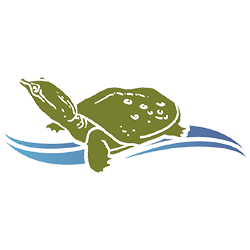Read the full Third-Party Monitor for Chautauqua Lake Herbicide Treatments here.
The June 29, 2020 application of ProcellaCOR EC to 86.4 acres of Chautauqua Lake was conducted by Solitude Lake Management. The third-party monitoring report (Report) was submitted by Princeton Hydro, LLC and made public on February 3, 2021. In this Report, an important conclusion was that the reduction of the target species, Eurasian watermilfoil, from the 2020 treatments was not significant. Thus, the treatment program was not successful in achieving one of its main goals. The failure to significantly reduce the biomass of this species raises the question of the efficacy and cost effectiveness of the use of ProcellaCOR EC in the future.
Native plant communities are critical to the health and vitality of Chautauqua Lake and their importance requires that they not be harmed by herbicide. Long-term monitoring of species-specific native populations must be a priority. This is particularly crucial for Coontail, which is an over-performing species for fishery habitat and nutrient uptake.
The question of dispersion of herbicides in Chautauqua Lake needs to be addressed. When the wind speed is above 5 MPH, the resulting currents are believed to be higher than the north-south drainage current of the lake. With the permitted wind speed for treatment set at a 10 MPH maximum, concern for chemical dispersion remains. Additionally, the ProcellaCOR EC label states: “…for management of freshwater aquatic vegetation in slow moving/quiescent waters with little or no continuous outflow….” Since the lake does not meet these parameters, this raises another question about the use of ProcellaCOR EC in Chautauqua Lake.
The following comments are presented regarding the three objectives stated in the Report. Objective 1. Evaluate the apparent effectiveness of the herbicide treatment.
- It should be noted that 7 of the 15 treatment sites had differing depths between pre- and post-samples. More importantly, the average depth of all 15 treatment sites is 3.8 feet and the average depth of all 15 non-treatment sites is 6 feet. These differences weaken the Report’s ability to evaluate the herbicide’s effectiveness due to inadequate controls. Because growing conditions for aquatic vegetation is depth-dependent, we question the placement of control sites that differ from the treatment sites by more than 50%.
- The non-treatment sites were identified as being “…fifteen (15) points…located outside of the treatment zone.” Because both the treatment and non-treatment sites were all situated within the same bay, and the amount of dispersion is unknown, we question the validity of comparing them. The dispersed chemicals may have impacted vegetation in both areas which may have confounded the non-treatment sites’ utility as controls.
- Although the Report (Pg 24) describes the reduction of milfoil to be “sizeable”, it states (Pg 21), “The target species, Eurasian watermilfoil, was ‘Sparse’ during Pre-Treatment and was also ‘Sparse’ Post- Treatment.” This suggests there was no significant difference between pre- and post-treatment in Sherman’s Bay. Thus, the effectiveness of the herbicide treatment on the target species, Eurasian watermilfoil, appears to be not significant.
- The apparent effectiveness of the herbicide treatment overall was also not significant. The Report (Pg 20) analyzes the average biomass of all plants: “The reduction in biomass at the Treatment site was non-significant with a p-value of 0.06. The reduction in biomass at the Non-Treatment site was non-significant with a p-value of 1.”
- The evaluation of herbicide treatments in lakes is usually performed temporally from one year to the next. That is, a single season’s effectiveness is evaluated through the lens of time. The pre- treatment surveys are normally undertaken in the spring one year prior to treatment. The post-evaluation survey is normally performed in the late summer or fall of the treatment year. The pre-treatment evaluation for this Report was done six days before treatment and the post-evaluation was conducted a mere six weeks after treatment. Adequate baseline data as well as post-treatment data must be compiled to effectively evaluate the efficacy of these 2020 treatments.
Objective 2. Evaluate the potential impacts of the herbicide treatment on non-target plants.
- The Report provides no discussion of the impacts of the herbicide treatment on individual non-target native plant species. Pre- and post- evaluation of biomass for all the native species combined is shown (Figure 3.2) and analyzed within the overall biomass as “non-significant.” A species-specific breakdown showing the impacts on non-target native plants may show impacts that are occluded by this combination. By biomass alone, common species may bias the sampling and provide results that do not convey the whole story. Less common species may be more heavily impacted, but that would not show in this analysis.
- Native species are analyzed by “Species Richness” (Figure 3.1) and “Floristic Quality Index” (Figure 3.3). Whether the native plant communities are represented by richness or floristic numbers, their pre- to post-treatment variation do not reflect a significant increase. The pre- and post- dates are at vastly different times of the year in the life of the aquatic plant community, and most of what is being measured are the life cycle differences of individual species.
- Repeated from Objective 1 review, the evaluation of impacts of the herbicide treatment on the native plant population needs to be done through comparison to the prior year.
- Since Ceratophyllum demersum (Coontail) is a native plant targeted by ProcellaCOR EC per its label, a separate discussion of its pre- and post-treatment biomass should be included in the Report. It should be noted that 7 out of 15 treatment sites saw a reduction in Coontail biomass.
Objective 3. Evaluate potential effects of herbicide treatments on ambient water quality via in-situ monitoring.
- We have no comments on this objective’s findings.
